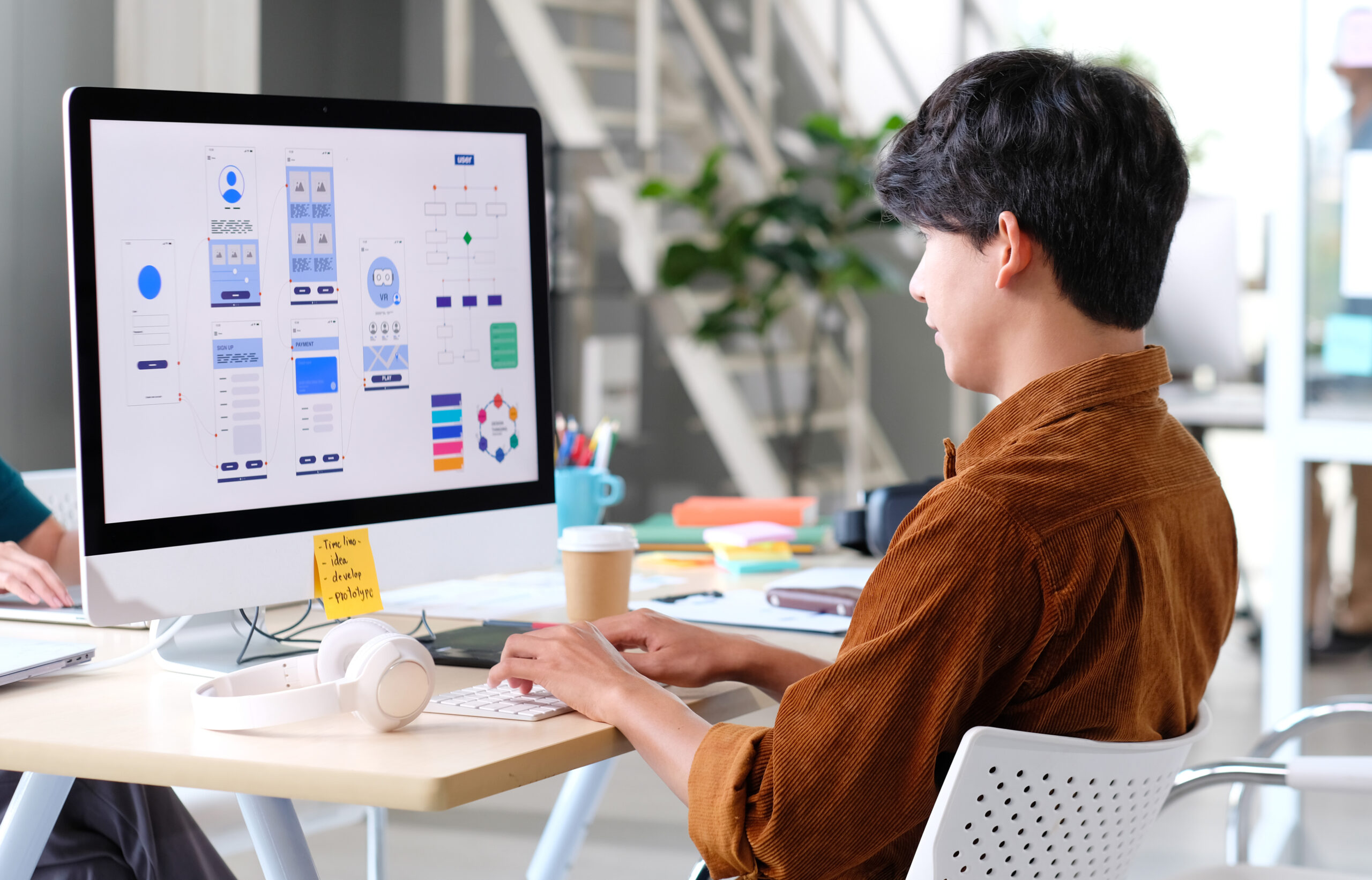Grasping Internet Layout: Key Principles for a User-Friendly Web Site
In the realm of internet style, the focus on user experience has become paramount, forming exactly how internet sites are constructed and regarded. As we check out these fundamental components, it ends up being apparent that the choices made throughout the style process can have long-term ramifications on a site's performance and individual loyalty.

Value of Individual Experience
In the realm of internet design, the importance of customer experience (UX) can not be overstated. UX encompasses the general complete satisfaction a user originates from communicating with a website, dramatically influencing their assumption of a brand and their likelihood of returning. web design klerksdorp. A properly designed UX helps with smooth navigation, cultivates user involvement, and ultimately drives conversions
Recognizing users' habits and needs is vital in creating an efficient UX. This entails leveraging research approaches such as user identities, trip mapping, and usability screening to gain insights right into customer preferences. By customizing layout elements to satisfy these demands, designers can boost use and create a much more user-friendly communication.
In addition, a favorable UX adds to the website's trustworthiness and credibility. Individuals are most likely to engage with a site that is visually pleasing and simple to navigate, which subsequently boosts brand name loyalty. On the other hand, a bad UX can cause high bounce rates and a negative understanding of the brand name.
Instinctive Navigating Layout
A reliable navigating style is essential for assisting individuals with a website, ensuring they can locate the details they require swiftly and efficiently. Intuitive navigation enhances user experience by permitting smooth communication with content, resulting in boosted interaction and contentment.
To attain user-friendly navigation, it is vital to establish a clear hierarchy. This involves arranging web content right into sensible classifications and subcategories, allowing customers to comprehend the structure at a glance. Descriptive labels for food selection products are vital; they need to be simple and representative of the web content they bring about, reducing obscurity.
Uniformity is another vital principle. Customers must experience familiar navigating components throughout the website, such as the placement of switches and food selections. This consistency aids strengthen user expectations and reduces cognitive tons.
Additionally, incorporating search functionality can dramatically enhance navigating, particularly for content-heavy web sites. This feature encourages users to situate details info promptly without having to navigate via multiple pages.
Lastly, functionality screening can provide vital insights into exactly how genuine customers communicate with navigating elements, providing possibilities for improvement. Altogether, a properly designed navigation system is fundamental to an user-friendly site, advertising performance and enhancing overall customer satisfaction.
Receptive Website Design
Responsive web style is significantly essential in today's digital landscape, as it makes sure that internet sites give optimal viewing experiences across a large range of devices, from desktop to smart devices. This strategy enables a single website to adapt its layout and content to fit different screen sizes and resolutions, improving functionality and availability.
At the core of receptive layout is fluid grid formats, which make use of relative units like percentages rather than fixed pixels. This flexibility permits components to resize proportionally, keeping aesthetic harmony and performance. Additionally, media queries play a crucial role by applying details CSS styles based on gadget qualities, such as display width or orientation.
Including flexible images and responsive media is likewise crucial; these components ought to scale suitably to stop distortion and guarantee a smooth experience throughout devices. Touch-friendly layout factors to consider are critical, especially for mobile customers, as they frequently navigate via touch motions instead than clicks. web design klerksdorp.
Regular Visual Elements
Constant aesthetic elements are vital for developing a cohesive brand identification and improving customer experience throughout electronic systems. These elements consist of color design, images, layout, and typography styles, which collectively produce a combined visual that customers can conveniently recognize and relate to. A distinct shade scheme not only reinforces brand acknowledgment but additionally evokes particular emotions, assisting users with the web site efficiently.
Typography plays a substantial role in readability and general aesthetic charm. Utilizing a limited number of fonts and preserving regular sizes and weights guarantees an unified flow of info. Images needs to likewise align with brand name values and messaging; premium photos that fit the overall style will certainly enhance the website's good looks and professionalism.
Moreover, layout consistency throughout different web pages fosters familiarity, making navigating user-friendly. Customers should really feel comfy and oriented as they check out numerous sections of the web site. Consistent visual components not only enhance the visual allure however additionally contribute to usability, resulting in enhanced involvement and visite site retention. Eventually, a well-designed internet site, defined by natural aesthetic aspects, shows expertise and builds depend on with customers, developing a favorable initial impression and motivating return check outs.
Access Considerations
Ensuring accessibility in website design is a basic element that enhances regular aesthetic elements, allowing all individuals, despite their capabilities, to communicate and navigate with electronic material properly. Availability factors to consider are essential for producing inclusive internet sites that satisfy the varied needs of users, consisting of those with specials needs.
To start with, utilizing semantic HTML is crucial, as it aids display viewers translate the framework and material of a web page precisely. Alt text for images enhances comprehension for aesthetically impaired customers, while captioning video clip material guarantees that those with hearing problems can engage with the material.
In addition, color comparison must be thoroughly evaluated to aid customers with visual disabilities. Making certain that text is understandable against its background enhances readability. In addition, key-board navigability is essential; visit this web-site all interactive components need to come without a mouse, dealing with users with movement challenges.
Verdict
In final thought, mastering web layout requires an extensive understanding of user experience concepts. Prioritizing these facets not only boosts individual involvement and fulfillment but additionally fosters brand name loyalty.

In final thought, mastering web style demands a comprehensive understanding of user experience principles.